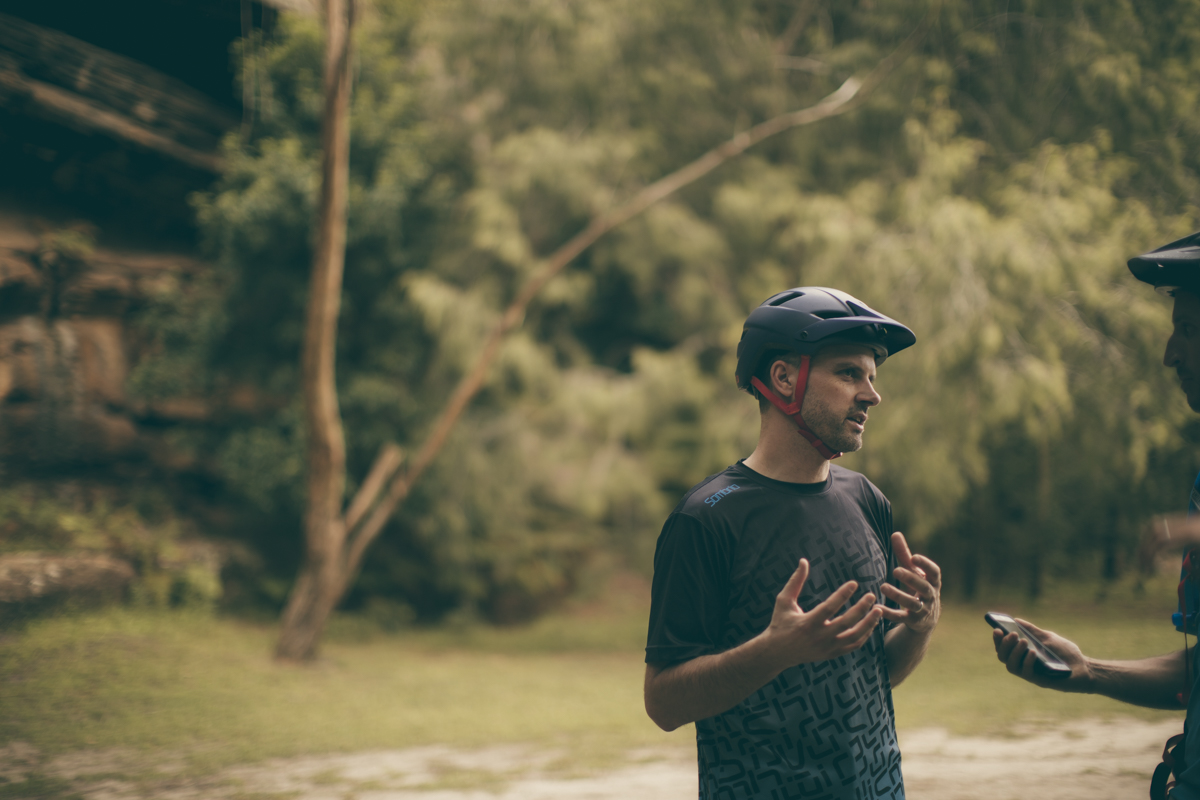
Hello, I am?
Hi, I’m Jeremiah Boobar, I’m Cannondale’s director of suspension technology.
So what do you do all day?
Basically, I work with a bunch of talented people trying to turn bumps into heat for Cannondale.
Cannondale have been very innovative and pushed the boundaries in suspension and engineering. How will you enrich that tradition or change that tradition?
Cannondale have a really long history in innovative suspension, with Headshock, Lefty, the DYAD shock on Jekyll and Trigger, even the old Fulcrum downhill bikes. One of the reasons I’m on board is to continue that innovation, but not with features for feature’s sake, with real improvements.

If you had to choose between reinvention and refinment, what would you choose?
I’m more of a refinement guy. I believe there’s a lot of great stuff out there which can be improved. But a lot of invention comes through refinement.
We were talking earlier about the new Cannondale Habit as being a great example of refinement, rather than reinvention. Would comment more on that?
First of all, the Habit was done before I showed up, there was a talented team behind it and I can’t claim any credit for it. But what I think it is representative of, is Cannondale’s product development going forward. It’s a very simple looking, clean bike but it still leverages Cannondale’s Si technology. Having the flex stay arrangement as opposed to a pivot allows that frame to be incredibly light and stiff, it’s about the same weight as our Scalpel but you’re getting a ripper of a 27.5″ 120mm bike. It’s definitely refinement, not reinvention.
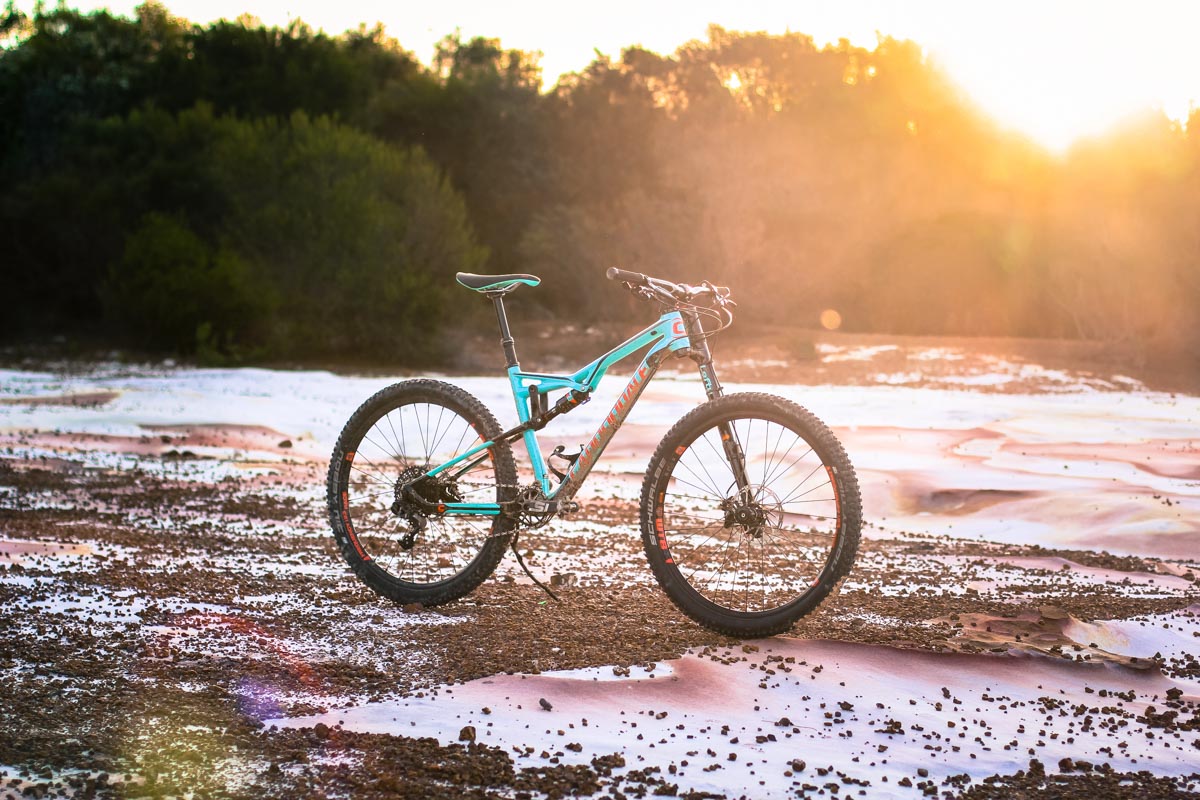
You can’t talk about Cannondale with talking about the Lefty. Now, the Lefty is 15 years old next year. Some people love it, others definitely do not. How do you get the haters across the line?
There’s a certain point at which haters are just going to be haters, but for others I think it’s just very foreign. It’s hard to understand for them – I mean, it’s got one leg, how does it even work? People aren’t aware of the roller bearing technology inside, and how it performs under the kinds of loads which would cause friction and binding in a bushing system. Where a bushing suffers from friction under load, the roller bearings do not. It’s the equivalent of you and I trying to drag this rock over here across the dirt, or if we put a whole bunch of logs underneath to allow us to roll it along.
Are there any particular challenges with working within the Lefty chassis that mean it’s more suited to one particular style of riding? Or can it be applied to all areas of mountain biking?
There will be challenges with any chassis package. Obviously with the Lefty, you need to fit spring and damper in one leg, so you need to be more creative. But I don’t feel like it has any particular constraints.

You said before that prior to coming and working with Cannondale, you’d never actually ridden a Lefty.
That’s right. And I think it’s incredibly important to know where you fit in the lay of the land – it’s one thing to know your own product, but you need to understand your competitors’ too, because the customer is exposed to them all.
So knowing that I lacked that information, when I started I took everyone involved in the suspension side of things and we went out to Boulder City outside Vegas for a week of of back to back comparative testing. Everyone had a standardised setup – same frame, same tyres, same tyre pressures. We did a day of runs to get familiar with the track, so we were really in tune with the terrain, and then we began testing – we’d do a run on a Lefty, then immediately swap out the fork for a competitors equivalent, say Lefty Supermax and Pike and FOX 36, and note the performance differences.
It was really eye-opening, particularly in terms of the fork stiffness and seeing how that would benefit you in choosing a line and then having the ability to stay on it. Whereas on some of the other products, you’d find yourself getting sucked off line. Flat corners too, the way the Lefty would left you take a tighter line was really noticeable.

Looking at where you’ve come from, you were with RockShox for 16 years full-time. Over those years, what are the projects you’re most proud of?
It’s hard to say that I’m not proud to have been part of the Pike project. That was big project and a huge success. But other highlights I’m proud of are the creation of a standard for direct-mount downhill stems. And funnily enough, the Bottomless Token system in Pikes too. Those tokens were originally developed as a way of us testing the spring volume in the Pike – we were trying to determine the best air volume for the spring, and using these spacers to tune it. Some of test riders were more aggressive and bigger, faster riders and were bottoming out the fork, others like me ride off the back a bit more and don’t need such a progressive spring curve. Eventually we realised, ‘hey, why don’t we just put these spacers into production and let people tune their fork for their style?”
Electronics. Cannondale were one of the first companies to use electronics in suspension, with the ELO, Electronic Lock Out, and fu#k me if it wasn’t a nightmare soldering those connections back together… Where do you see electronics going?
Electronics allow you to add features that are literally impossible to do otherwise – things that people just can’t act fast enough to do.
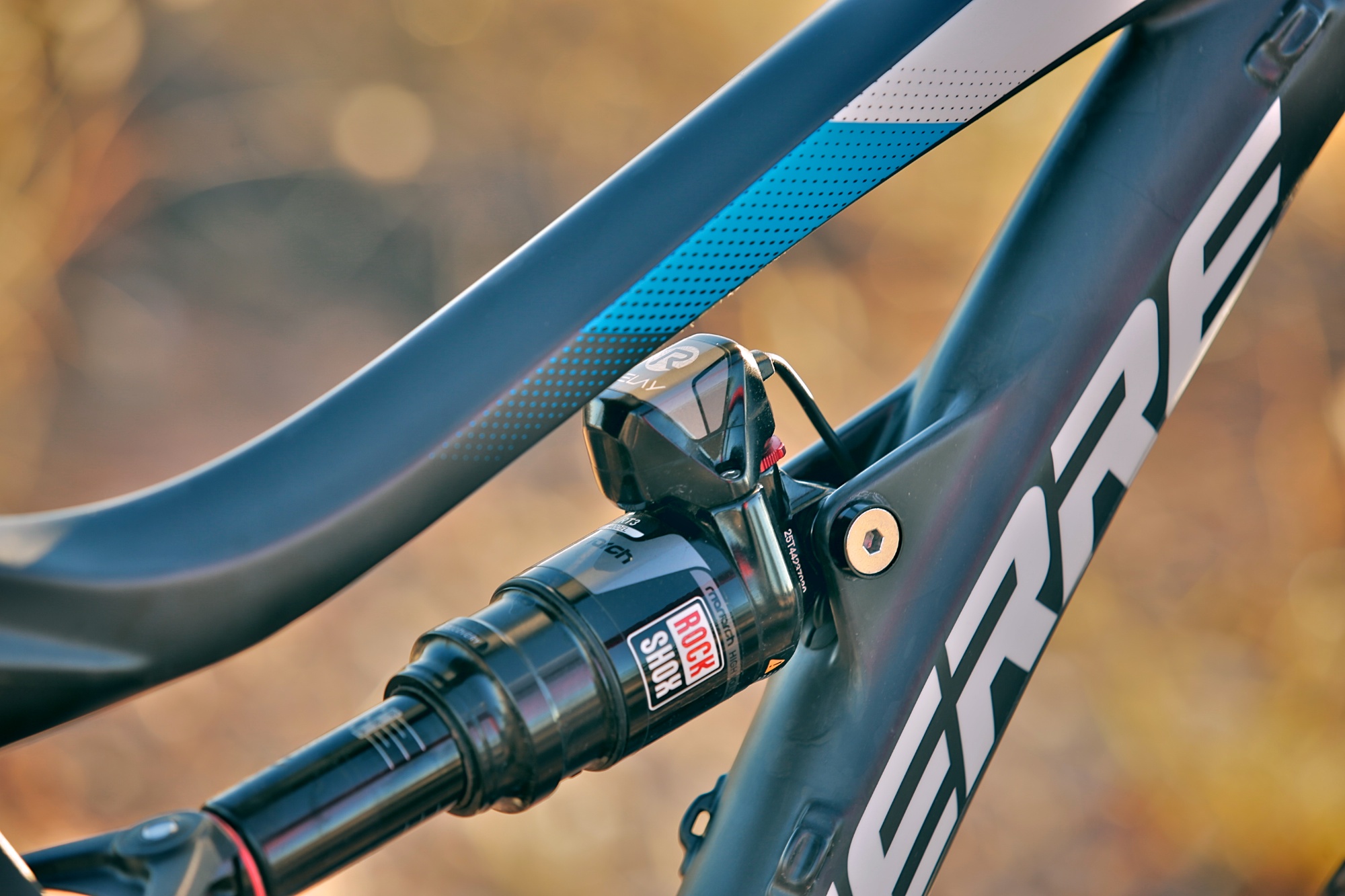
So you’re talking about instant about damping adjustments?
It won’t stop there, no way. That’s just the start of it. Personally, the idea of having to charge my mountain bike is a bit uncomfortable. But having been part of the E:i project (read more about the E:i system in our reviews of E:i equipped Lapierre bikes here and here) I know what is possible and what the ride benefits can be, so I’m willing to live with a charger.
I was reading an old interview in Dirt magazine where you said mountain biking needed to be more comfortable in its own skin. Do you feel we’ve got there yet?
I feel like we’ve gotten better. At that time, there was this real divide and confusion in the sport between freeride and downhill. People where adopting styles from everywhere – do I wear a t-shirt when I go ride, or should I be wearing baggy jeans, or maybe tight jeans…? But mountain biking is starting to mature and get it’s own look. We’re getting out of our teenage years, where we’re wearing baggy jeans one day, tight jeans the next, putting on goth makeup for a day or two.
Do you feel that the rise of Enduro has been a big part of that, in establishing an identity?
No, I don’t think that’s necessarily linked. There’s just been a change, a shift towards more professionalism in the sport that’s permeated through, in downhill, freeride, even cross country has more of its own identity away from road now.
On the subject of cross country, as someone who was a big part of developing the RockShox Reverb dropper post, are surprised we haven’t seen more dropper posts in cross country racing?
I am, yes. I mean, those bikes are so stinking light that I thought more guys would have taken that risk and added a few grams. Especially as we’re seeing much more challenging course design, it’s pretty exciting. But on the other hand, those guys starve themselves, they weigh every part on their bike, so maybe the thought of adding weight is too much. I mean, it’ll come, there just needs to be a little more development done to get the weight down a bit more.

Do you think there’s any element of bravado in not running one?
No, I don’t think so. Not from the riders I’ve spoken to anyhow. I mean Marco and Mani (Cannondale team riders Marco Fontana and Manuel Fumic) are really progressive, and I know if the weight were down they’d run one in a second. Those guys are entirely focussed on the advantage – will it help me win a World Cup?
You’ve ridden the world over, do you have a favourite, for riding and testing?
Whistler? Did I say that too fast? Hahah! That whole area has a really special place in my heart. It’s also a really great place for product testing too, there’s so much variety. Moab too, that’s another amazing place for product testing, it’s just so rough. I mean, if you stop and take a look around when you’re riding Porcupine Rim in Moab, you’re surrounded by broken bike parts!
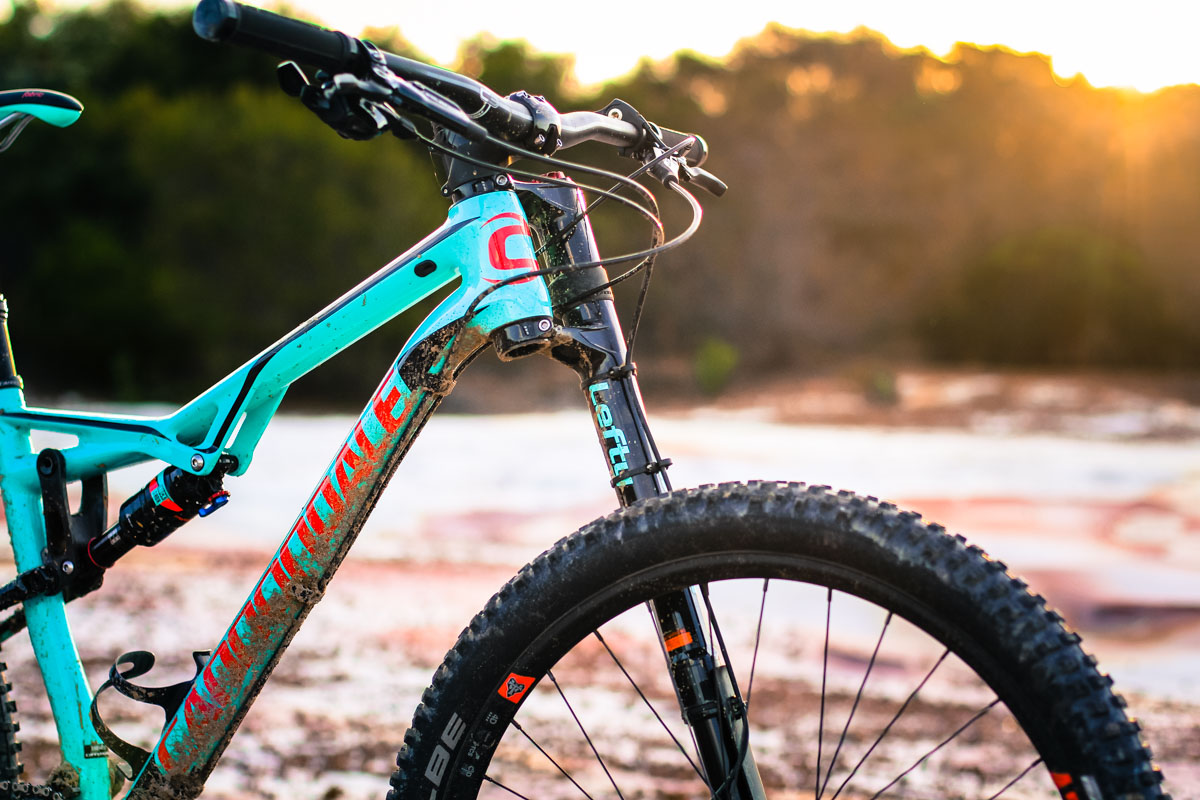
How should an average rider be going about working out the right suspension setting for them? I feel like that education is something the industry has not done particularly well with.
Firstly, people need to be realistic about what they’re doing on the bike. I mean, the pros are the fastest people on the planet, so why wouldn’t I use their setup? Thing is, those people have that setup because they are the fastest, not the other way around.
So for the average rider, what’s really important is to repeat the exact same run and don’t make it long – 30 seconds is plenty. So repeat that run, and make one adjustment each time. Do some bracketing – do the run with your rebound all the way open and see what happens, then with it all the way closed. And slowly you’ll narrow it down, making one adjustment each time, and then suddenly it’ll start to click. You’ll be able to interpret what your feeling and what adjustments will impact that. But it takes some discipline and some time, and lots of people just want to ride, which is why we’re producing more suspension setup charts, guides, videos and the like to help people short cut that process.
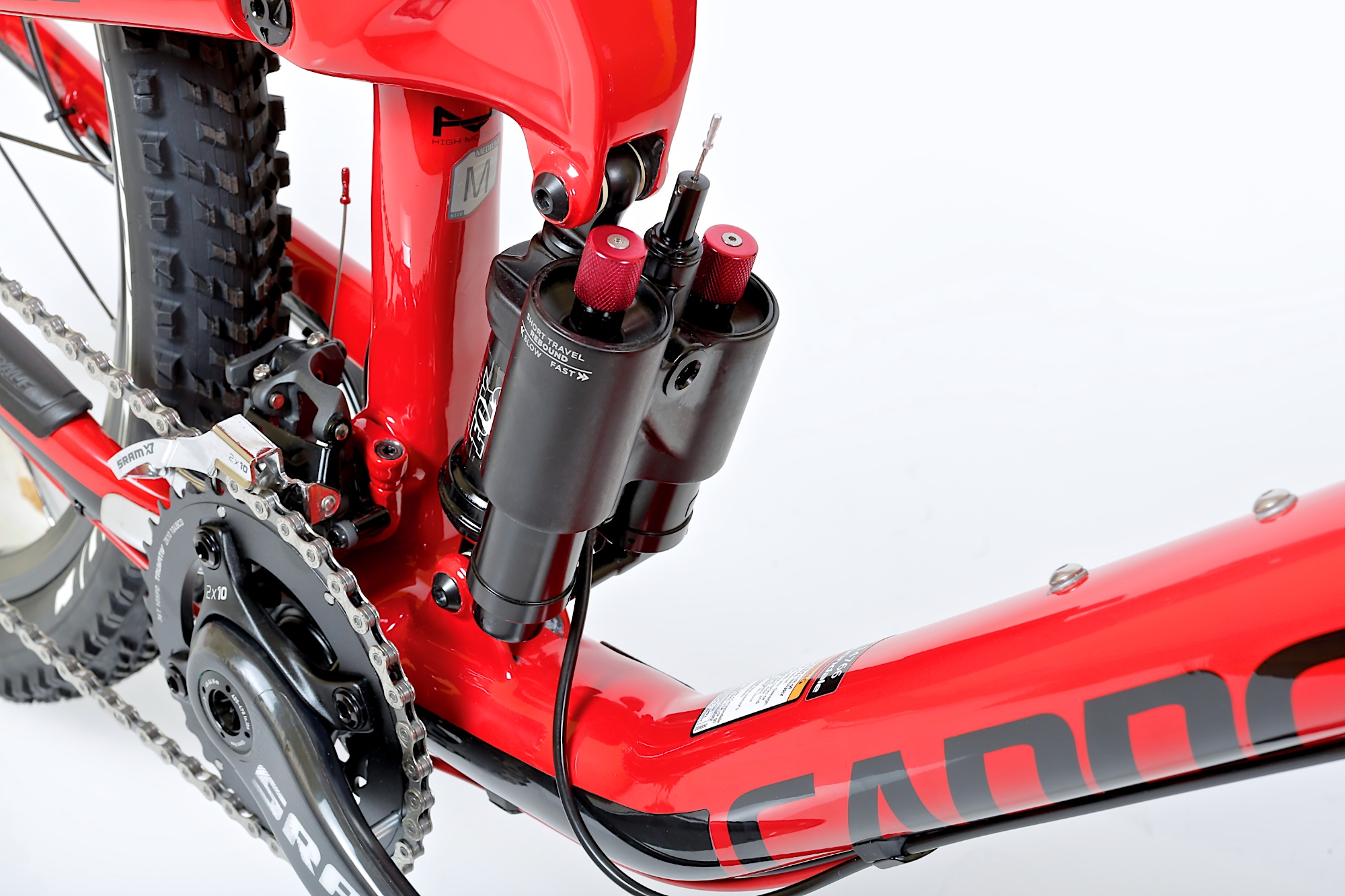
Do you want to enlighten us about putting together a pressure guide chart for a fork?
According to the internet, the guide is just a wild guess you pull out of thin air! But honestly, committing to a pressure guide is one of the most stressful things I’ve had to do as you know many people will just follow it and never make an adjustment after that. We get a range of riders, of all weights, heights, men and women of all abilities, we have them ride the fork a number of times, we work with them on tuning the pressure till they feel it’s ideal for them. Then we plot the results, run it through the computer to deal with anomalies and then eventually commit to a guide. But whatever you do, there’ll always be someone on the ‘net screaming at you that you’re an idiot.
Working with pro teams has been a huge part of your career. Are their any riders who stand out as terrific or terrible at giving feedback?
Eric Carter, to his own detriment, is one of the more sensitive riders to setup that I’ve ever worked with. He would be constantly testing, and he would develop stuff that we’d eventually transfer over to Peaty. Peaty was interesting in that he loved to test in the preseason, but once the racing started he’d stop the testing entirely and focus just on the racing. Carter would keep testing throughout the season, so Peaty was reaping all the benefits without having to do any test riding! It was a successful combination.

John Kirkaldie also sticks out, but for another reason… I’ve never told him this. Telluride World Cup, there was a big piece of debris that broke loose in his fork and it completely clogged the compression circuit to the point it was non-functioning. Kirkcaldie comes down after his final practice run and is all like, “This fork feels fantastic, can you just do the usual buff up for the race run?” So then we pull it apart and holy smokes it’s a mess in there! So we completely redo the fork, new cartridge and all get it back to him. And he’s all like, “This is great, it’s just like before, just a little bit smoother, perfect!” And I’m like, “Oh no, John, I think you may have just dropped off the test list..!” I never told him that one.
That said, riders have on days and off days – they may have a lot on their mind or be struggling with conditions and give you bad feedback one day, but give you great feedback the next. So yes, some riders are better than others, but most riders can be developed. It just takes effort to develop the feel.
The one total standout who never has a bad day is Nico Voullioz. Unbelievable. His feel for the bike is the best. And his feedback is extraordinary; in English it’s at a high level, but in French it’s another level again, so if you can get a strong translator you will get the absolute best feedback in the business. And he’s still my favourite rider to watch.
Cheers Jeremiah, we look forward to riding more of your work soon!
